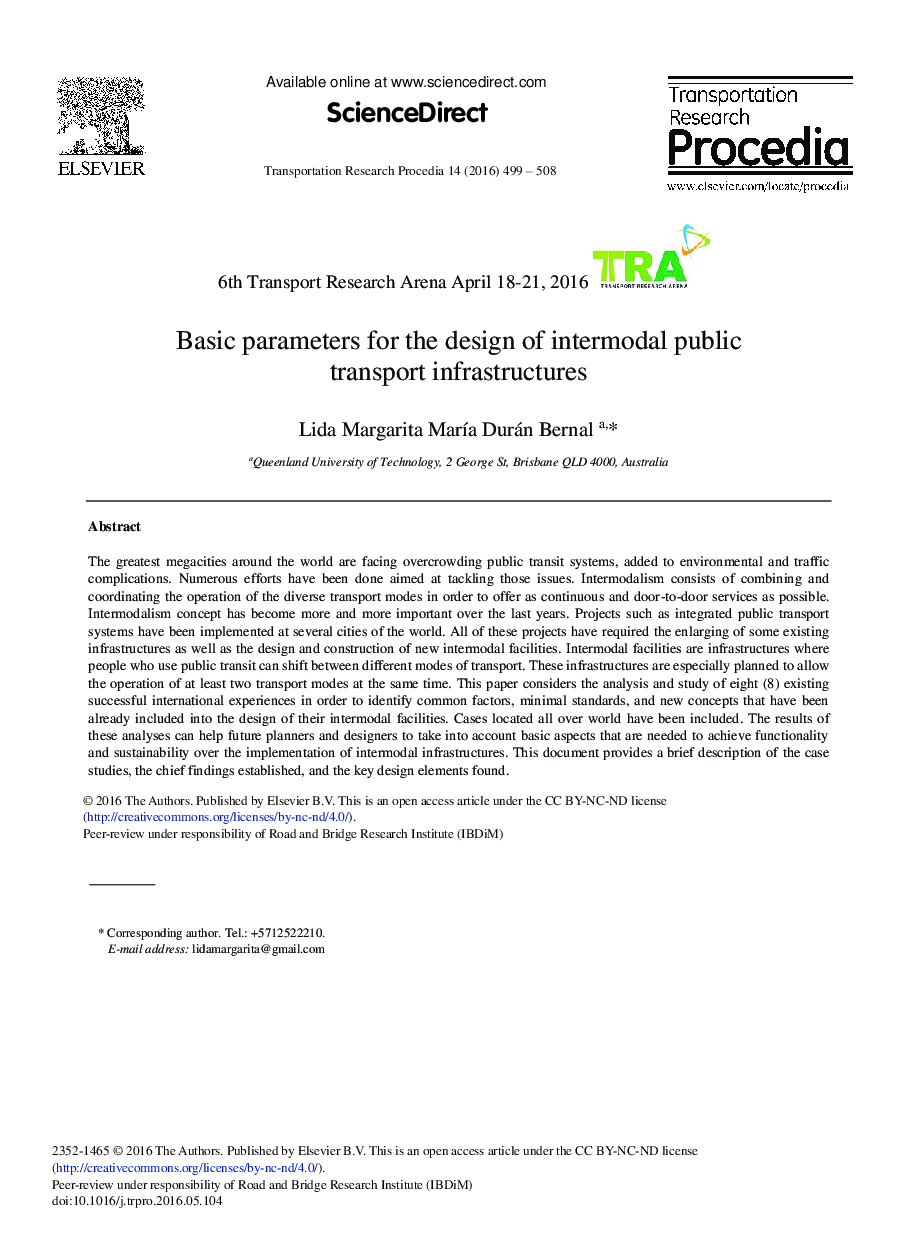| Article ID | Journal | Published Year | Pages | File Type |
|---|---|---|---|---|
| 1106236 | Transportation Research Procedia | 2016 | 10 Pages |
The greatest megacities around the world are facing overcrowding public transit systems, added to environmental and traffic complications. Numerous efforts have been done aimed at tackling those issues. Intermodalism consists of combining and coordinating the operation of the diverse transport modes in order to offer as continuous and door-to-door services as possible. Intermodalism concept has become more and more important over the last years. Projects such as integrated public transport systems have been implemented at several cities of the world. All of these projects have required the enlarging of some existing infrastructures as well as the design and construction of new intermodal facilities. Intermodal facilities are infrastructures where people who use public transit can shift between different modes of transport. These infrastructures are especially planned to allow the operation of at least two transport modes at the same time. This paper considers the analysis and study of eight (8) existing successful international experiences in order to identify common factors, minimal standards, and new concepts that have been already included into the design of their intermodal facilities. Cases located all over world have been included. The results of these analyses can help future planners and designers to take into account basic aspects that are needed to achieve functionality and sustainability over the implementation of intermodal infrastructures. This document provides a brief description of the case studies, the chief findings established, and the key design elements found.
